Novo: Two New Projects
FLASH UPDATE:
Novo just announced a MASSIVE land deal which includes 100% consolidation of Beaton’s Creek, Virgin Creek and Contact Creek to name just a few projects. A whopping 2,900 km2 (209,000 hectares) was consolidated.
… That’s the third NR in as many trading days, and this is by far the most impressive one.
Novo has released two news releases during the last two trading days. One announced the acquisition of the Mt. Elise Project and the other announced an option on a Bellary Dome tenement in south-western Pilbara.
Mt. Elsie
The description of the Mt. Elsie Project in the news relase:
“The Acquisition further strengthens one of Novo’s goals, being consolidation of highly prospective gold projects in the East Pilbara region near the Company’s Beatons Creek project,” commented Quinton Hennigh, President, Chairman, and a director of Novo Resources. “Numerous high-priority bedrock and alluvial gold targets have been identified by Novo staff at the Mt. Elsie Project. Novo plans to soon undertake work designed to generate drill targets for testing later this year. We see the Mt. Elsie Project as a new, important part of our strategy to build a future hub of production around our well-advanced Beatons Creek gold project near Nullagine.”
In other words it sounds like the Mt. Elise project has potential for both lode- and alluvial gold.
First of all there are multiple gold prospects mapped within this claim (in red) and there are some interesting magnetic readings as well:
The following are some Notes from MINEDEX on some of the prospects:
“Little Elsie” prospect:
- “Qtz vein in qtz carbonate schist (after basalt); 3 shafts to 10m max plus a number of pits; best sample 0.3m @ 23.14g/tAu”
- “Au: Best sample 0.3m @ 23.14g/tAu; Production 137.16t @ 71.73g/t for 9.838kg”
“Elsie Abd North” prospect:
- “Au: Chip sample contained 78 g/t gold. Assay was repeated at 88 g/t. Other elements were not assayed. Corresponds to sample no. EC11”
- “Auriferous quartz vein within ultramafic unit contained gold up to 78 g/t in chip sampling within E45/1043; veins generally trend at 300deg; location corresponds to sample EC11”
“Elsie (46)” prospect:
- “Complex NW trending qtz vein in mafic volcanics; worked from adits and stoped to surface; production 1899-1906 551.97t @ 92.99g/t for 51.33kg”
- “Au: Production 1899-1906 551.97t @ 92.99g/t for 51.33kg”
“Elsie Abd North 3”:
- “Cut and minor pits on a SW trending qtz vein about 120m NW of Elsie Abd”
“Elsie Abd South”
- “Location note: 2km SE of Mount Elsie; Site coords from DGPS reading”
- “Au: Au up to 70 g/t in chips”
- “Shallow shafts on qtz vein in schistose komatiitic basalt on the E side of a steep chert ridge; Au up to 70 g/t; veins generally trend at 300deg; appears to be only minor production”
One can read more about the history of Mt. Elsie on Mindat.org where the following snippets are included:
“Information is scattered and incomplete. The original prospectors could not be located, but reports of alluvial gold found at the location surface in 1898. The following year fifty men are at the site, searching for alluvial gold. Much was said to be found, at least for several to finance holidays to the Eastern States. Bligh and party as an example arrived at Roebourne with 300 ounces of gold, some slugs of 40, 30 and 18 ounces each.”
“Around 1905 to 1906, John Martin had taken up the old Elsie Reward lease, and installed a wind powered 3 head battery, and small cyanide plant. He was driving on a 7 inch leader, and several small crushings are reported. Martin had produced about 100 tonnes of ore for just over 400 ounces of gold. He appears to have abandoned the mine once the water level was reached, and the Warden reports in 1908 the site is deserted.”
What one can gather is that there was some bonanza-grade, lode gold mined in the area and that alluvial gold was also mined.
The comment on the alluvial potential in the NR combined with the notes from Mindat made me take a look at what this area looks like while applying the Iron Index readings and if it might signal some “Egina type” lag gravel potential like in West Pilbara. Sure enough, there is a broad channel like anomaly that covers an area between two areas where there is both Mt Roe and Hardey Formation rock packages outcropping today:
… Since the older basement is mapped underneath the anomaly and it is surrounded by remnants of Mt Roe and Hardey Formation one might assume that the area of the Iron anomaly was once covered with potentially gold bearing conglomerates and that there is potential for Egina type lag gravels there today. I sent the slide above to Quinton Hennigh, aired my thoughts, and got this in return:
“There is indeed a remnant laterite here. Might be an old channel. The locals dig nuggets there all the time.”
This is of course good news and thankfully Novo Resources already controls the lion’s share of the anomaly. Furthermore, the high grade lodes at Mt. Elsie probably helped feed both the modern lag gravels as well as the ancient Mt Roe and Hardey Formation conglomerates back in the day. Thus, the different systems will indicate the potential in the other systems. If the lode gold target is good/extensive then it bodes well for the surrounding conglomerates and lag gravels. If the lag gravels are evaluated and proven to be good then it suggests that the other targets were good since the lag gravels are derivatives of the former.
All in all, the iron anomaly measures about 66 km2 (6,600 hectares) which is certainly nothing to sneeze at:
In short I think we are seeing the potential for an “Egina of the east” here. The Mt. Elsie lodes are planned to be drilled this year which I am looking forward to. Hopefully the different systems will reinforce the confidence in the other systems so we might be looking at both lode gold, Egina type gold, Mt Roe conglomerate gold as well as Hardey Formation gold in this area. If that is the case then one could understand how “shrinkage of ore” through ore sorting could act as leverage for this region.
Bellary Dome
The second acquisition is the option on the Bellary Dome tenement in south-western Pilbara. The tenement is located 350 km from Mt. Elsie and 240 km from Comet Well and Purdy’s Reward. It’s pretty much as far away as possible from those two projects and remarkably it also hosts gold bearing conglomerates…
Presence of gold bearing conglomerates confirmed by Marindi Metals (previous operator):
“Mellon seed” gold nuggets found:
Marindi’s geological schematic for Bellary Dome:
… One can clearly see how the conglomerate units are thought to have been uplifted and later eroded. Erosion led to release of gold which can be found on surface today. Perhaps the most interesting part of this area of the Fortescue Basin is the fact that it looks like the nuggets are less coarse, when compared to for example the Comet Well conglomerate gold, located some 240 km north at the other side of the basin.
Thankfully the Bellary Formation (which includes the bottom conglomerate horizon) is actually outcropping in a lot of places within the Bellary Dome area:
Anyway, the size of the Novo prize keeps on growing and I dare say that the market is still completely oblivious to what is unfolding in Pilbara. With each additional acquisition it tells me one thing…
Their confidence in the whole Pilbara gold story, in all its different forms, is increasing along with the size of the prize.
Note: This is not investment advice. Always do your own due diligence. I am not a geologist nor am I a mining engineer. This article is highly speculative and it’s just my opinions. Novo is my largest position and the company is a banner sponsor.
Best regards,
The Hedgeless Horseman
Follow me on twitter: https://twitter.com/Comm_Invest
Follow me on CEO.ca: https://ceo.ca/@hhorseman
Follow me on Youtube: My Channel



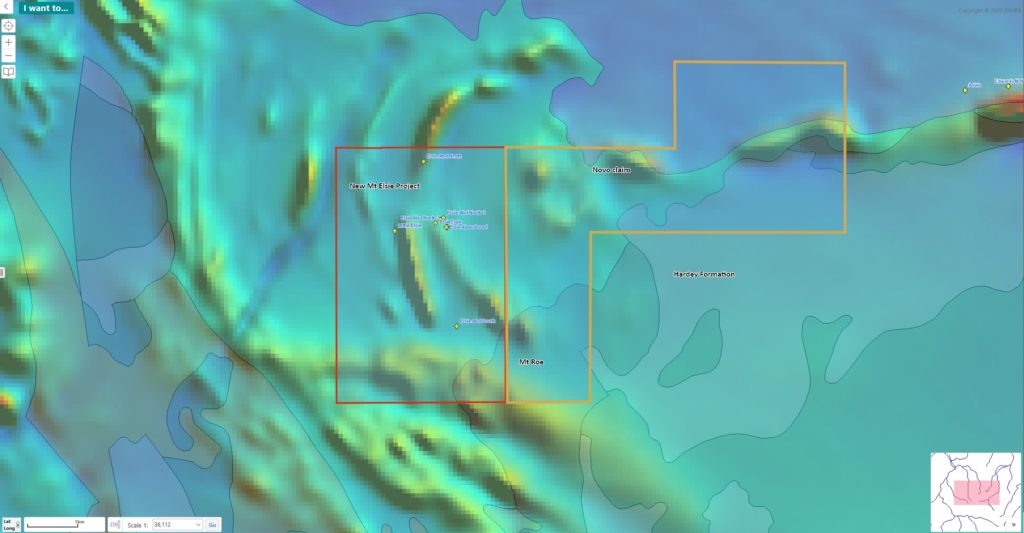
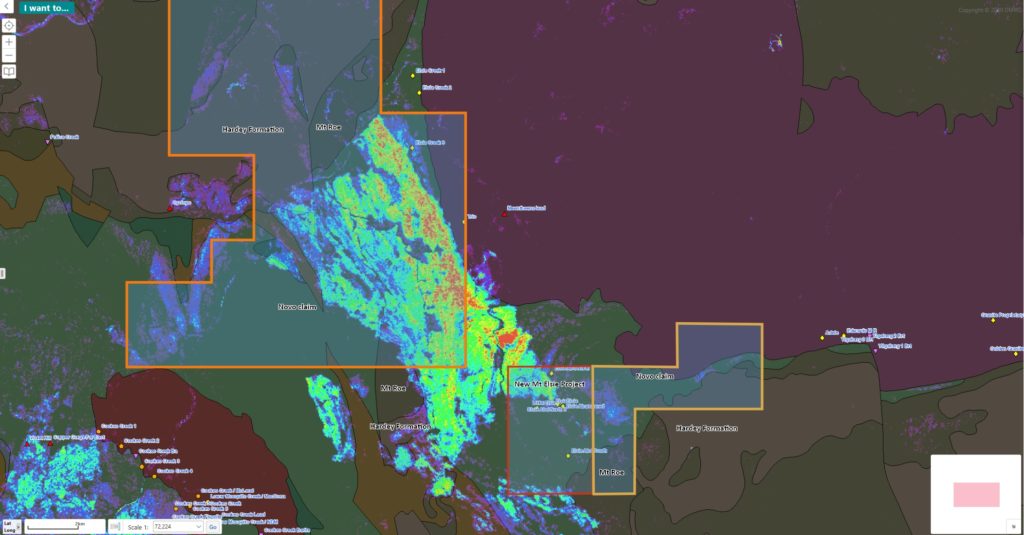
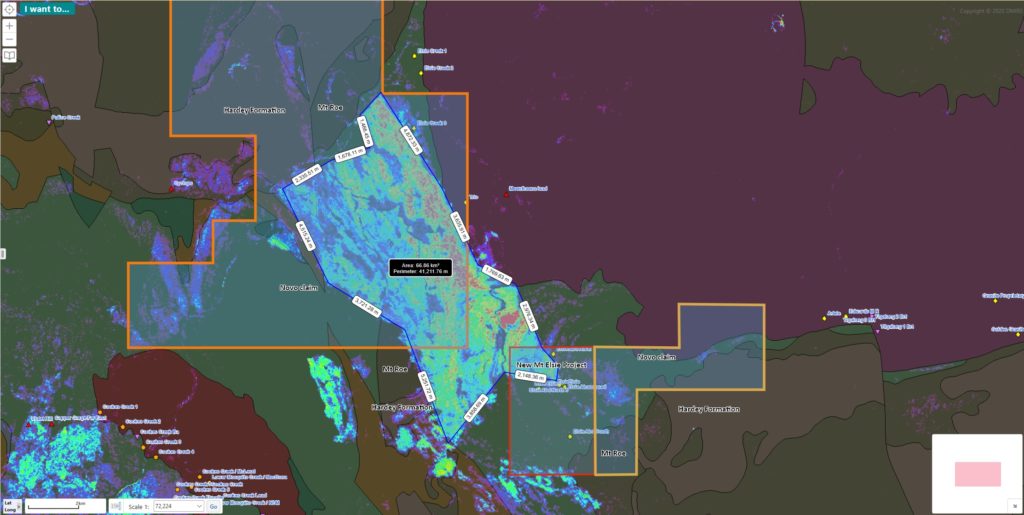
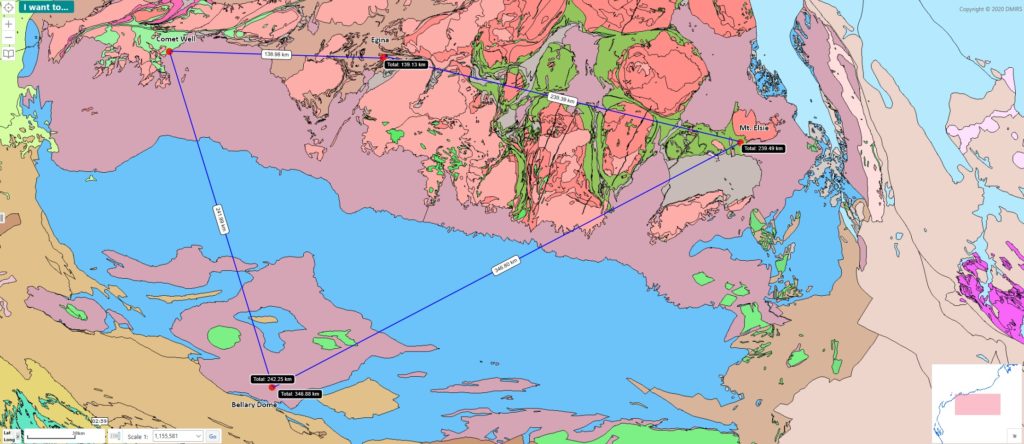
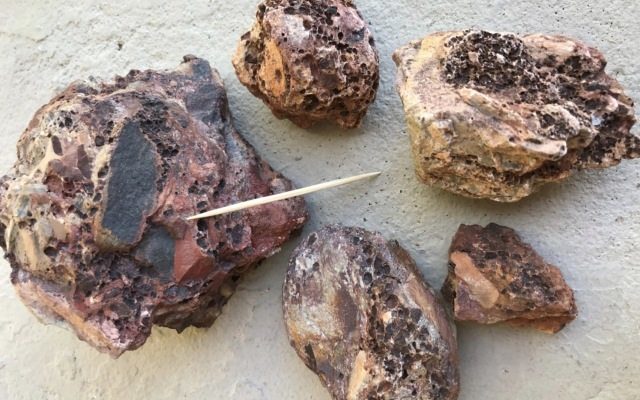
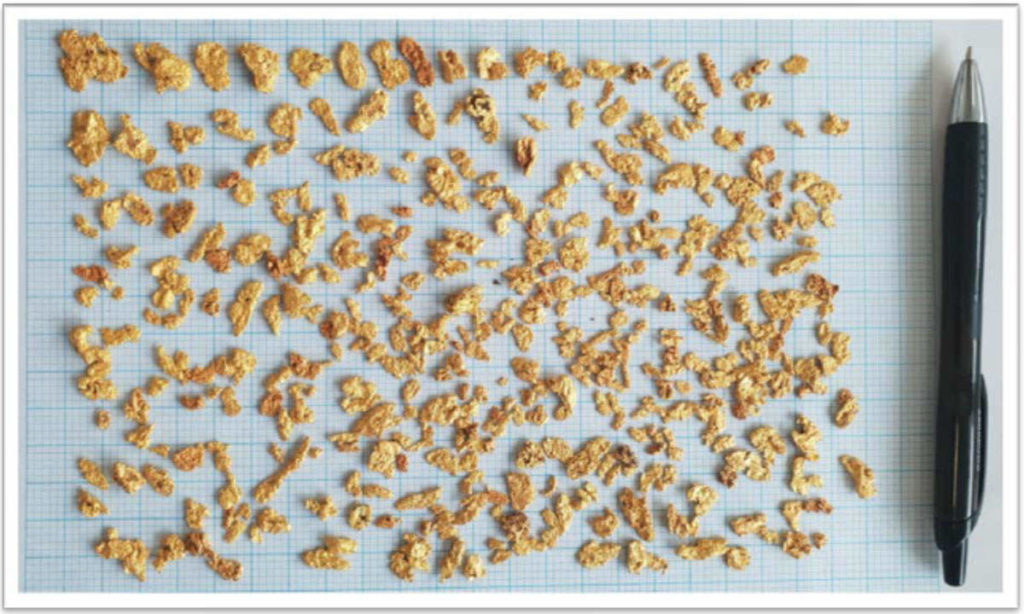
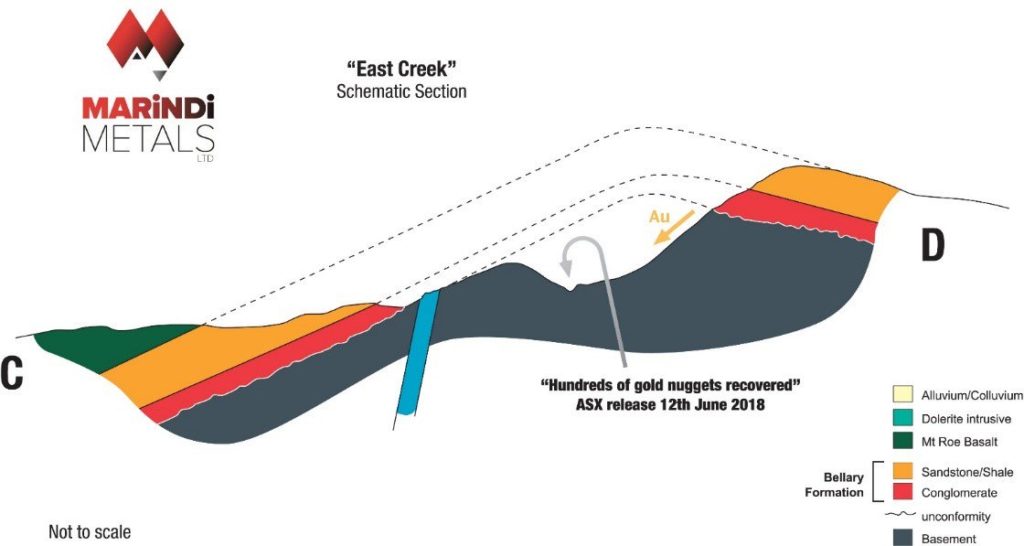

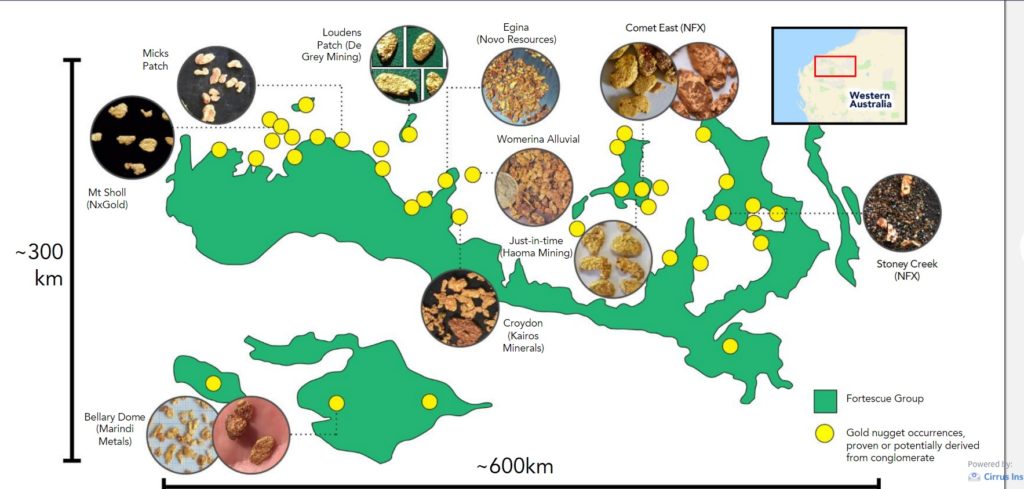

























Horseman, Thanks for putting together such a quick analysis of these 2 new Novo prospects. Quinton’s exploration team is really on a roll.
Thanks. I bought more NSRPF on Friday@2.39. If they have found a Wits2 I wonder why NEM or KL or Newcrest don’t buy the whole company while it is still a bargain?
Big question. When will Novo go into production?
My guess is they have finalized the deal for the mill and are picking up land to consolidate their holdings.
New about the mill before the end of the month.
Novo Resources has reported that they will be getting the Steinert sorter in place in 18 weeks. A trip by sea would take a bit over one week from Germany, why the delay.